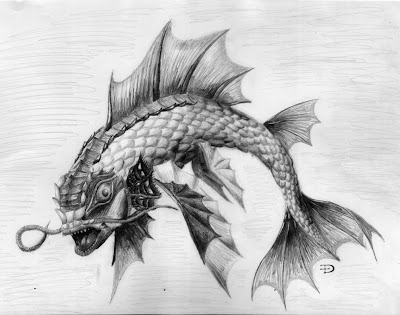Kelpies
Kelpies and Morgens are very similar, both disguised as beautiful women in the water, both waiting for men to pass by so as to drown them in the lakes of Scotland and Ireland. Neither is what they seem to be. There are some really big differences though, like how Morgens are basically Sirens, whereas Kelpies are actually horses.They can be differentiated from the lost ponies they pretend to be by their constantly dripping manes. It had an either black or white hide, and the skin of a seal- smooth, but as cold as death if you touched it. They would change into their womanly form and hide underneath the water all but their eyes, and look around for men to lure in. In its horse form it would lure people, and children in particular, to ride it, but once they touched it's skin they couldn't pull their hand away no matter how hard they tried, and the water-horse would jump into the lake, swimming down to the bottom to eat its victims, leaving nothing but the heart or the liver.
The Banshee
The Banshee is known as an omen of death, and is found in folklore from all over the world, just with different names. This fairy woman would always be seen washing the blood-stained clothes of a person that was about to die. The Banshee originally was just a woman from the Otherworld keening at the deaths of people, but then the story seemed to twist over time into her having the ability to predict deaths. They are able to appear any age that they would like, and either breathtakingly beautiful or as a hideously ugly old woman. She also has the ability to take the form of a hooded crow, a weasel, a stoat, and a hare. Although, sometimes in stories, a woman that seemed to be a banshee turned out to actually be the Irish battle goddess, the Morrígan. The Banshee's screech has been described in different ways all across Ireland, and even as a "low, pleasant singing" in Kerry.



